Everyone loves video games. Gamers spend hours playing their favorite games. After all, nothing beats the feeling of booting up your system and diving into your favorite game in the middle of the night.
That is why the gaming industry is so massive and profitable at the same time. As per Statista’s Report, “The global gaming market earned a revenue of around US$455 billion, with the mobile gaming market generating US$98.7 billion alone.”
That revenue is credited to games that tick the box. But do you know what makes a video game tick the box? It’s the game’s animation!
Yes, that’s right, a video game animation can make or break the game. If your video game animation is on point, then the gamers will appreciate it and play your game.
But if it’s not, then the players will notice a poor animation when they see one, even if your game’s got amazing graphics. They will most likely call you out to fix the damn thing.
Failing to offer good video game animations can make people abandon your game, and your game will end up being written on the wrong side of history.
And that is something no game publisher wants, trust me. So, what is video game animation in the first place? More so, how does it enliven the game and enhance the experience for players?
To find that out, we will discuss all about game animations in this blog, including their types and principles.
So, without any further ado, let’s dive right into it.
Understanding Video Game Animation
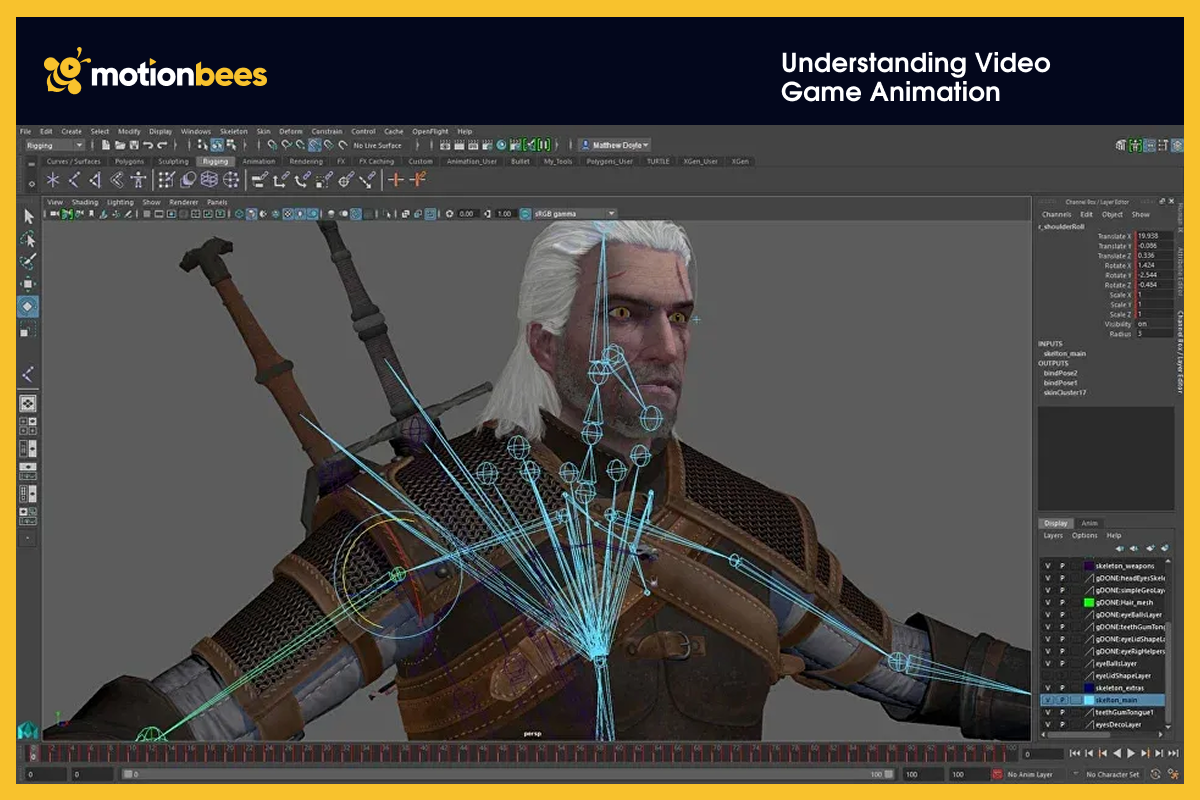
Animation is the heart and soul of a video game. It is the one thing that adds life to video games. This function, by definition, brings stories and characters to life.
So, what video game animation entails is that it creates moving images using technology and techniques.
Like all pieces of tech, animation has improved by leaps and bounds throughout the years. At first, gaming animations started off as merely pixelated characters.
But now, it has become the animations characters that we know. We see these animated video game characters move all over our screens from one way to the other in modern games.
It’s safe to say that animation video games have come a long way since their inception. This is thanks to the improvements in tech.
With it, game developers can add game character animation and bring characters to life. More so, they can add motion capture to make every part of the game as realistic as possible.
This can be noticed by the character’s movement and their facial expressions, which are almost life-like. What this does is it has opened doors of opportunities for storytelling.
It has allowed writers to use their creativity to write stories for games that are nothing short of brilliant. The stories in games these days are akin to movies.
All of this does nothing but enhance the player’s gaming experience and make it enjoyable. And at the end of the day, it is why video games exist in the first place.
What Animation Does in Video Games?
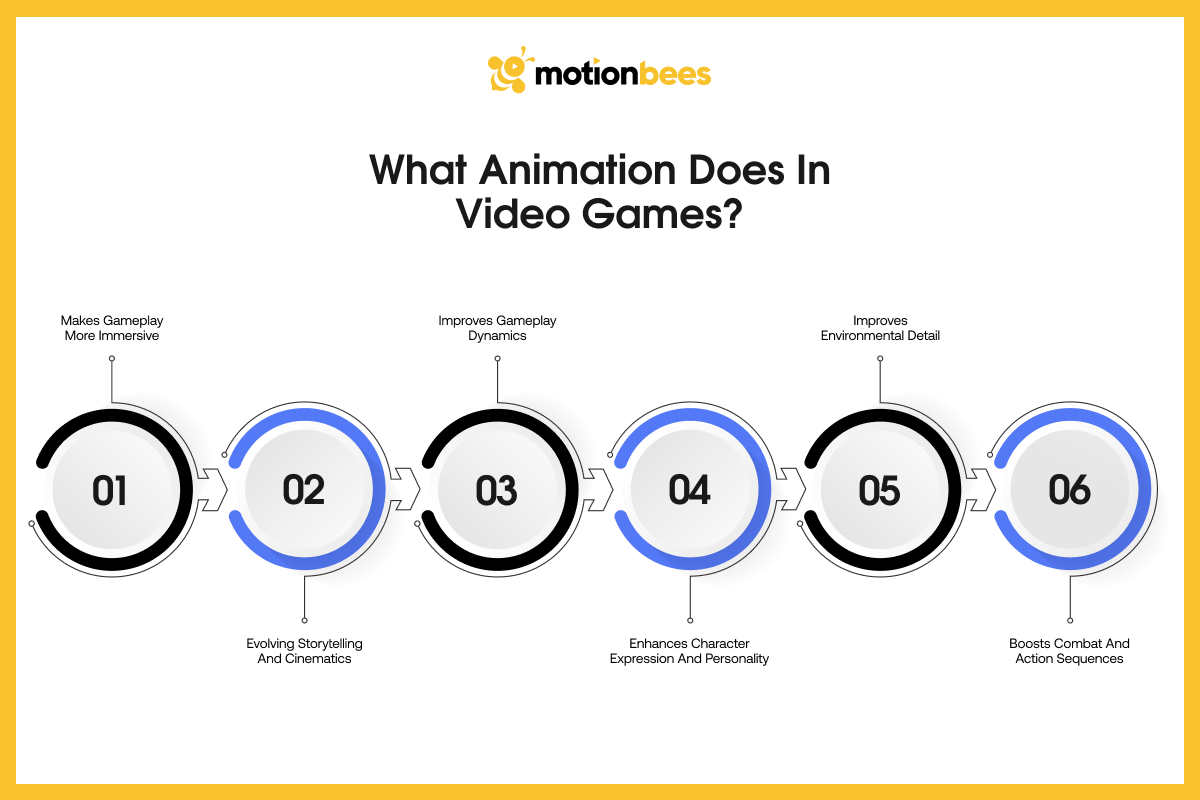
We mentioned that animation for video games makes the player’s gaming experience better. But in what ways does animation in video games make video games good?
Therefore, here are some of the ways in which animations for games work for the betterment of video games:
Makes Gameplay More Immersive
The first and most obvious thing gaming animation does is that it takes the gaming experience up a notch and makes it more immersive.
This means the players can immerse themselves in the game world as if they were part of that world.
More so, animation in game design makes everything feel so real and alive. This means realistic video game characters and dynamic changes in the environment.
Bring Your Ideas to Life with Professional Animation.
Let Motionbees Turn Your Story into Motion.
Evolving Storytelling and Cinematics
It goes without saying that playing video games animated feels like you’re part of the story. That is because animation games offer evolving storytelling.
This means everything in terms of storytelling is on point. That includes emotional expressions and scripted sequences.
Both of these things uplift the plot. And in turn, it makes the games nothing short of a cinematic thrill. More so, you can’t help but enjoy playing games with great storytelling.
Improves Gameplay Dynamics
Video game animation improves the gameplay itself. It enhances gameplay dynamics by giving the characters smoother movements.
More so, it makes the game physics more realistic as well. They also allow for seamless transition. All of this makes for an enjoyable gaming experience.
Enhances Character Expression and Personality
If you are an avid gamer like I am, then you must have a list of your top 5 favorite characters. But how did those characters become your favorite?
Well, it’s thanks to the character’s expression and personality. And both of these are developed by animation.
Animated video games give characters a personality like a hero should have. More so, animation brings the characters to life.
This way, the video game animated characters can showcase their personality. They can convey their emotions through their movements and gestures.
So, the next time you see a famous animation character smile and steal your heart or cry and shred your heart to pieces, you must remember it’s the animation doing its trick.
Improves Environmental Detail
It’s not just the characters getting the special treatment with animations. No sir. Animations are broad and apply to all aspects of a game.
This means the game’s environment also gets the upgraded perks. Animations improve the game’s environment elements such as winds, weather effects, and dynamic lightning.
It makes everything surrounding the player look and feel so real and alive, as if it were a movie.
Boosts Combat and Action Sequences
Ever feel like animated game characters do combat and action better than the actual actors? Well, you would not be wrong to think so.
That is because fluid animations make action much better than its real life counterparts. More so, responsive controls with fluid animations make combat sequences feel like a treat for players.
Types of Video Game Animation by Dimensions
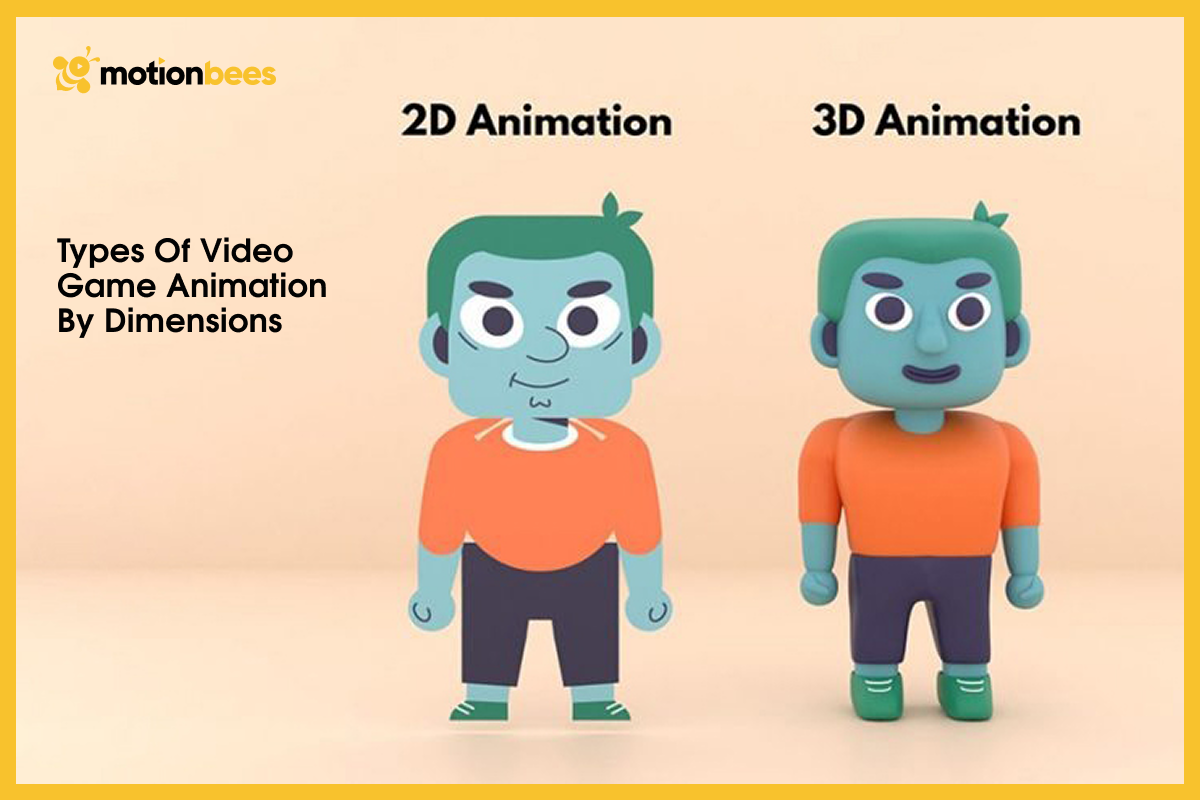
Types of video game animation are classified by dimensions and function. For the former, the types of video game animation are as follows:
2D Animation
The first type of video game animation is 2D animations. This involves creating animations in two dimensional space. It is done through frames that are either drawn by hand or created digitally.
When these static images (sprites) are played in a sequence to create movement, it brings characters and scenes to life.
This type of animation is used for side-scrolling, retro, and indie animated video game. Also, some famous 2d characters include Mickey Mouse, Donald Duck, and Scooby-Doo.
More so, Pac-Man and Mario from the Super Mario Bros. series are some cool video game characters to draw by using 2D animation.
3D Animation
The other type of animation is 3D animation. Almost all of the modern AAA games use 3D animation.
Three dimensional animation uses digital models with height, width, and depth. The extra dimension adds a layer of immersion by making the experience more realistic.
More so, it makes the camera angles and environments dynamic as well. One of the techniques used to create it includes motion capture. MoCap video games are the standard these days.
Types of Video Game Animation by Function
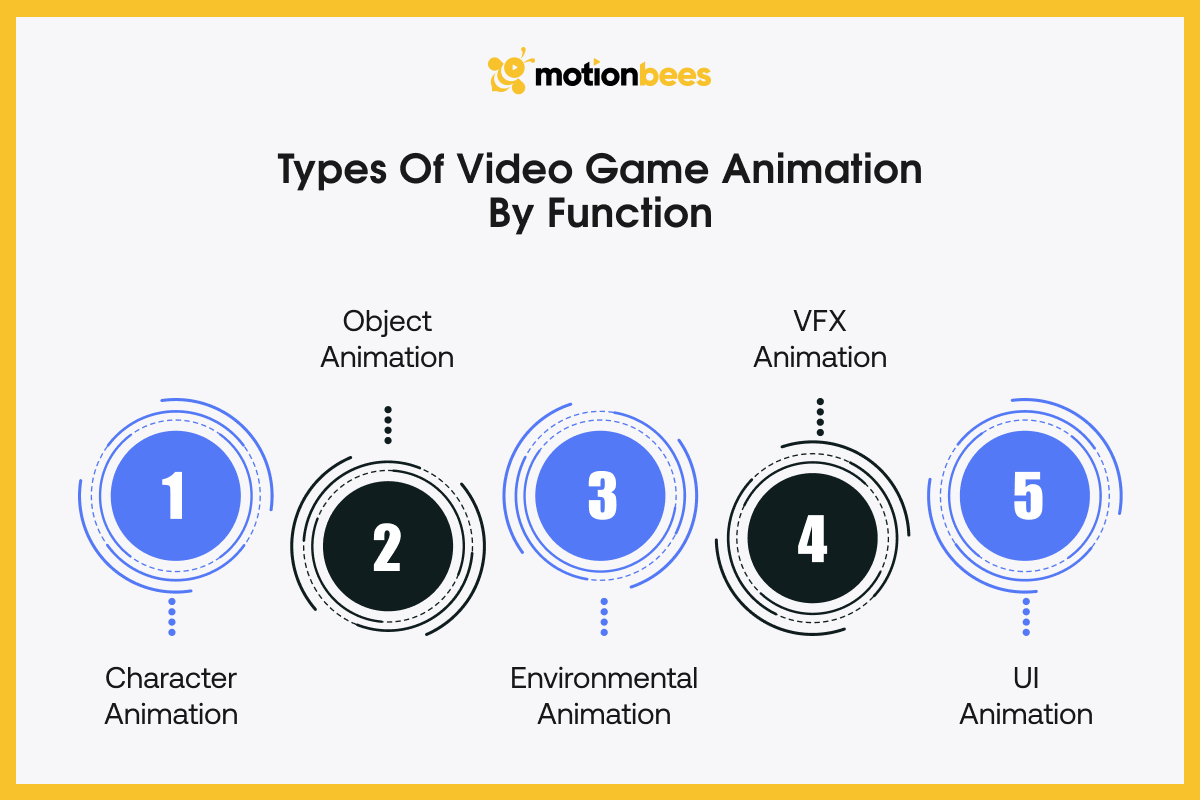
The other types of video game animation are classified by function and purpose. Therefore, these types of games animation are as follows:
Character Animation
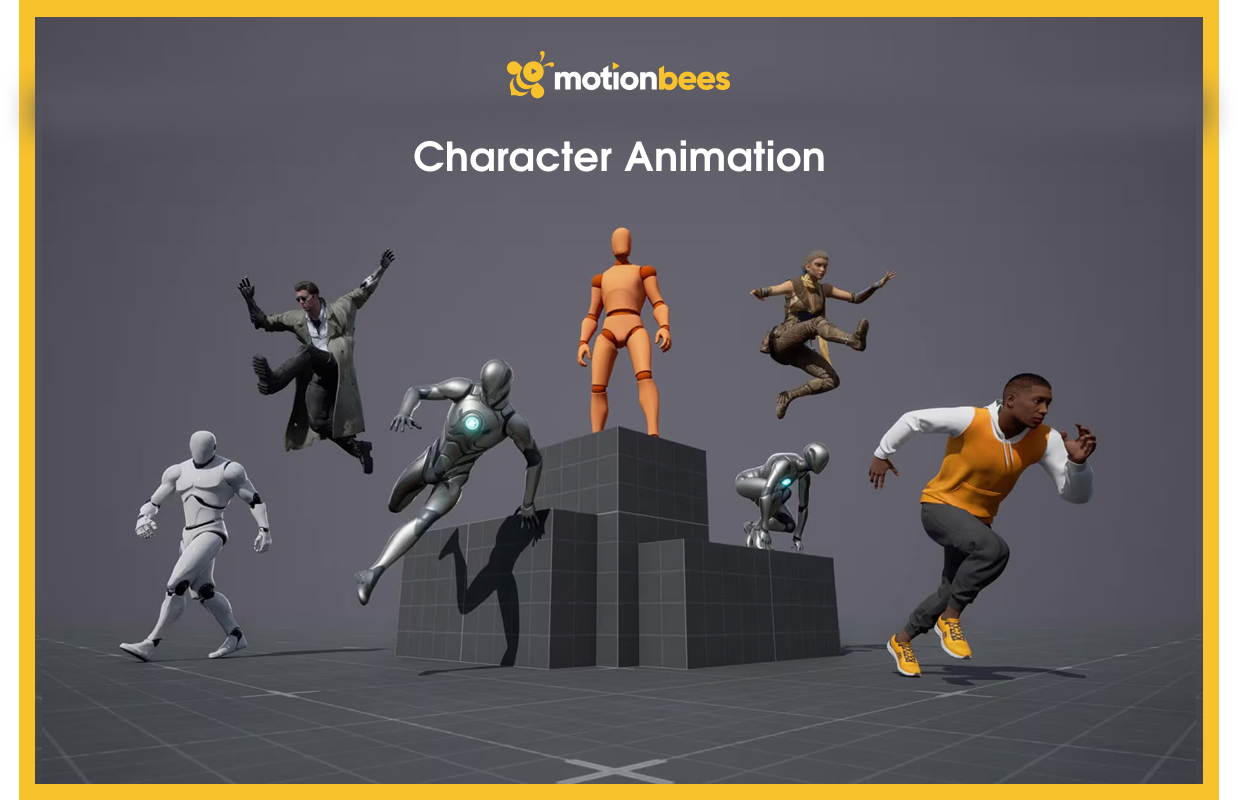
This is the most well-known type of animation gaming. Character animators use it to bring characters to life.
More so, they focus on the movement, gestures, and facial expressions of characters. Furthermore, they create the movements for the character.
This includes the character walking, running, jumping, picking up items, swinging swords, moving the head when speaking, and doing all sorts of stuff.
All of this creates the character’s personality. More so, it shapes the narrative.
Object Animation
The things the player interacts with and uses in the game fall in the object category. And the animation for those props and objects is called object animations.
This means whatever the character does, whether they pick up an object, open a chest, or throw an item, all are part of object animation.
These animations make objects respond to the player’s interaction. And yet again, it adds a layer of immersive experience.
More so, it makes the world feel alive and makes the game even more enjoyable.
Looking to Elevate Your Brand with Stunning Animation?
Our Animation Experts Create Videos that Engage and Inspire.
Environmental Animation
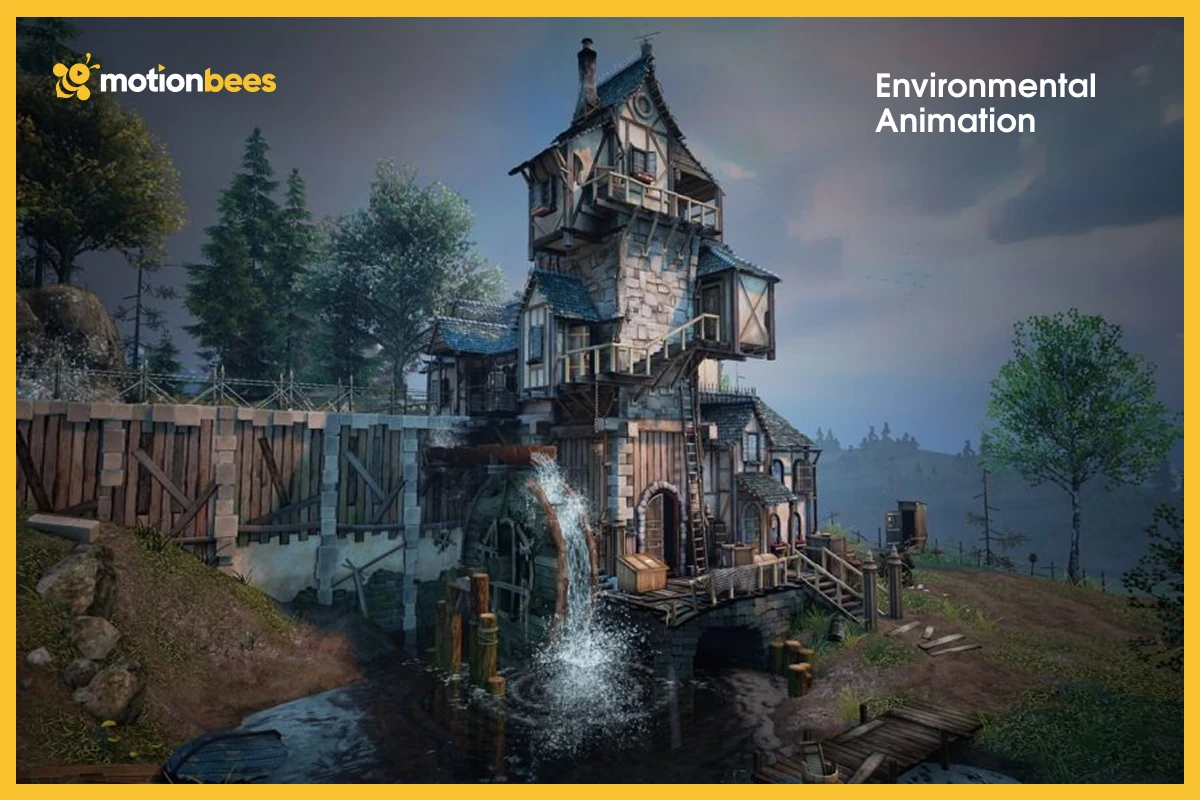
The thing that really makes the game feel alive is environmental animation. This animation is for the movement of things that take place outdoors.
So anything that is out in the open is considered an environment. And to bring that environment to life with movement is what this animation does.
Some environment animations examples include leaves falling from trees and grass moving with the wind, and light shining on surfaces.
More so, it includes things like water flowing in the river, rain pouring down from the sky, thunder and lightning, and things along those lines.
VFX animation
Anything that responds to player actions or environmental events and adds spice to the mix is considered a visual effect.
This means things like sparks, fire, explosions, smoke, magic spells, snow, wind blowing, and water ripples. All of these are small effects that help improve the game’s visuals.
UI Animation
The last type of animation is the user interface animation. The UI animation is used for things like menus, buttons, HUD displays, and other navigational elements.
Also, they improve navigation and provide feedback. These guide players through menus. So, when a player pushes a button and the push is a satisfying one, that’s when you know the game animators did their thing.
These are subtle animation style examples that are done intentionally. More so, they make the gaming animated experience more immersive.
5 Key Video Game Animation Principles
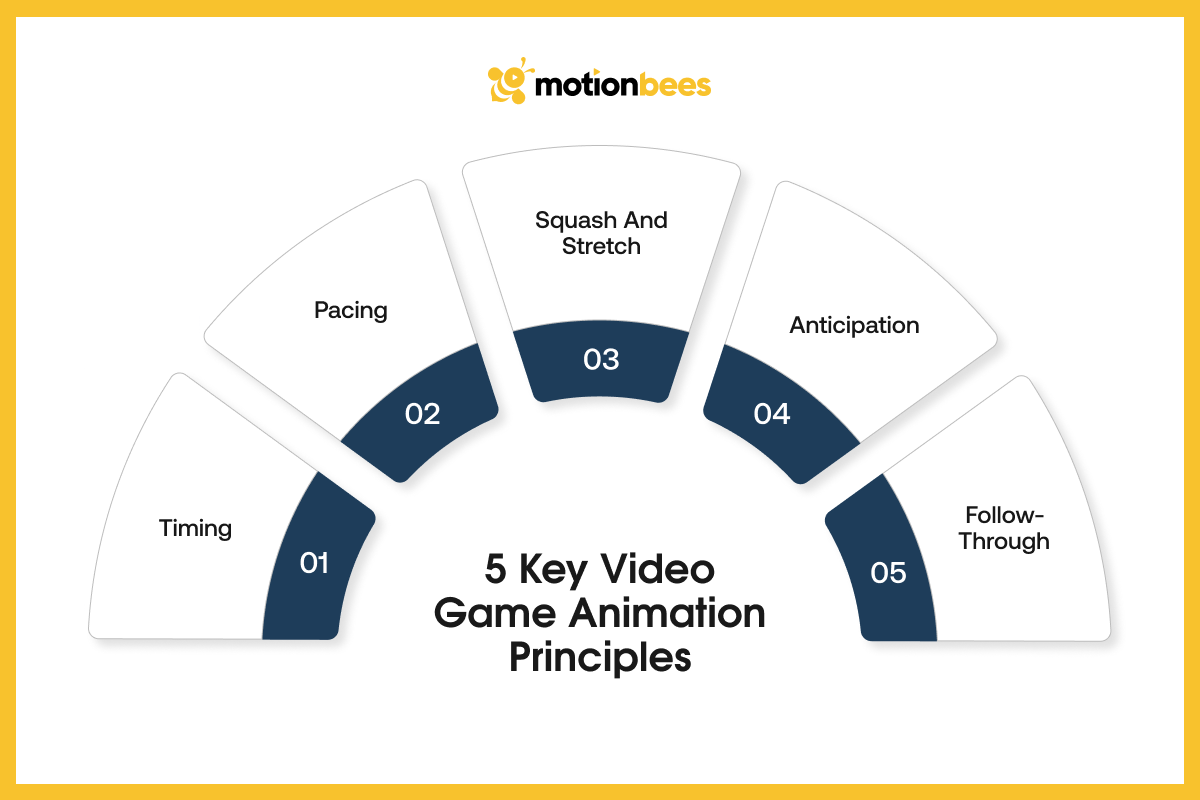
There are a lot of things that go into making video games. And most of these things have to do with animation.
So, considering these principles is a must for video game animators to get things started. These principles form the backbone of creating engaging and immersive experiences in video games.
More so, following these principles is a must. That is because it allows game developers to create animations that serve a purpose as well as make the game better for the players.
While there are a lot of principles, we have taken the liberty of listing the five most fundamental principles of video game animation. These are as follows:
1. Timing
The first and probably the most fundamental principle in video game animation is timing. Timings in animation mean the speed and rhythm of movements within an animation.
It decides how fast or slow a character or an object moves from one pose to another. More so, it means the time it takes for a character to move at a speed and convey how a motion feels to the player.
The timing for the animations needs to be spot on. This way, it can make the actions feel responsive and paced right.
Timing is crucial to make animations feel smooth, which in turn enhances the gameplay experience. More so, it gives a response as well as a feedback loop for the player’s actions.
2. Spacing
Spacing in animation means the distance an object or character animation design moves between poses and frames.
This defines its acceleration, deceleration, and speed. When spacing is close between frames, this creates an illusion of slow or controlled movement.
On the other hand, further spacing between frames means speed or dynamic action. More so, spacing helps create smooth movements in character fighting game animations and transitions.
It is key to making sure animations flow smoothly from one frame to the next. So, by tweaking the spacing, animators can control the feeling of weight, power, and the laws of motion.
This way, the animations become more real. And they also look good as a result of spacing.
3. Squash and Stretch
One of the core principles of animation is squash and stretch. In it, objects or characters are deformed to emphasize motion and impact.
This is done through conveying elasticity and flexibility in their movements. All of this makes the movements look better.
More so, it adds visual interest to animations. Squash and stretch are used in video games to magnify actions by conveying impact
. Furthermore, they emphasize important moments in gameplay. This is how this thing works: for instance, when a character jumps into the air, their body scratches.
On the other hand, when it comes back down and crouches, its body squashes. This principle enhances the sense of weight, energy, and excitement.
4. Anticipation
Another one of the more important principles of animation is anticipation. As the name suggests, it prepares the players for what’s about to come next.
This could be an action, an event, or an interaction. It does that by exaggerating the movement or pose before the action takes place.
This creates a sense of anticipation and builds up excitement. More so, when the actions do take place, they are a lot more impactful.
Anticipation foreshadows players’ actions. More so, it builds up moments and provides visual cues for what’s about to come.
One of the best examples of animations when anticipation is put to effect is when a video game character model crouches down before it jumps.
This way, the jump feels satisfying and looks a lot better than if it were to jump straight up without crouching down.
Ready to Transform Your Brand Story into Motion Graphics?
Let Our Creative Team Animate With Purpose and Precision.
5. Follow-Through
Follow-through, also called overshoot or settle, is a movement that takes place after the main action has just finished.
This principle continues the movement when the previous action stops, and gives it a secondary motion.
It gives a satisfying conclusion to an action. More so, it enhances the weight and momentum of an animation.
Follow-through makes character movements feel much more real by adding detail and finesse to them.
One of the best character animation examples when follow-through takes place is when a character runs and stops after a sprint and starts to regain their balance.
The bit where the character regains the balance is called follow-through. And this thing adds detail to the motion and makes the action feel much more real when they end.
Why Choose Motionbees for Animation Services?
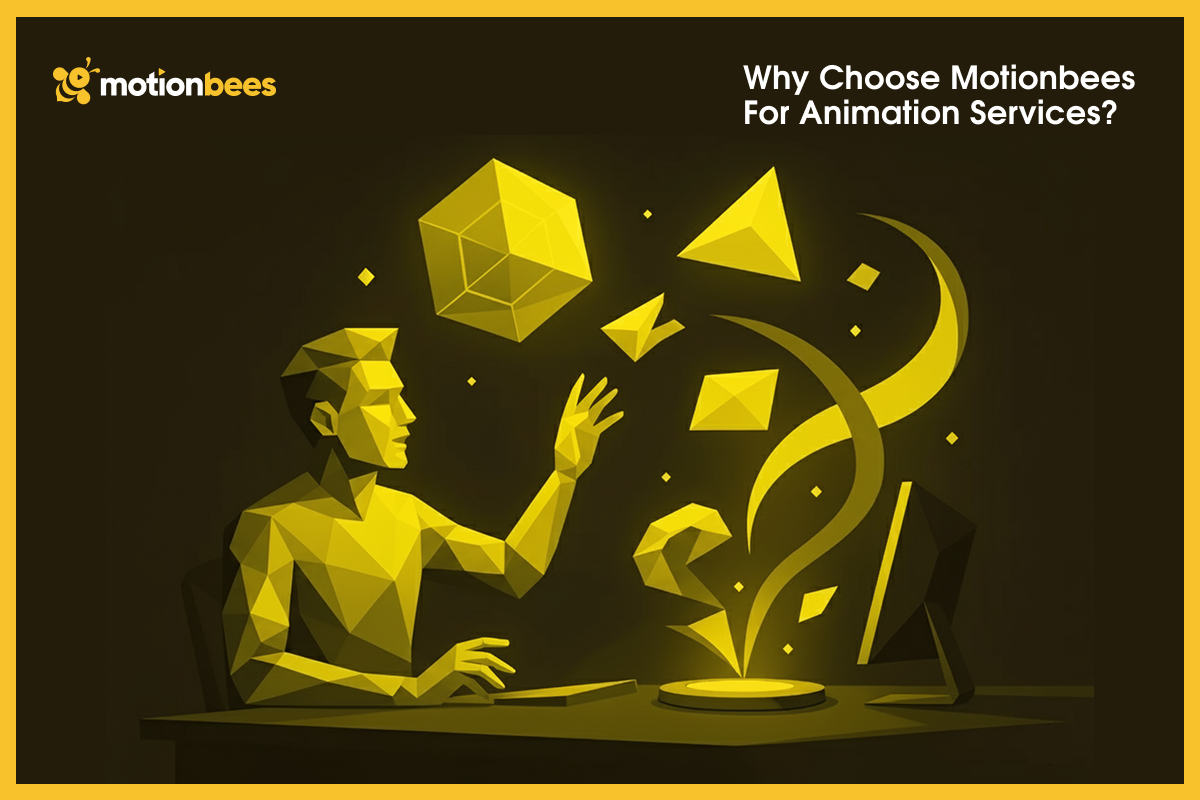
Animation is nothing short of art brought to life. And it takes only an artist to create a piece of art.
This is where Motionbees comes in, as we are the animator and the artist in this case, who create animations.
We are an animation agency that provides Animation Services to clients of all sizes and across industry sectors.
So, if you have great character animation ideas and want to bring them to life, we can do that for you. We will create animations and cartoon characters examples for you based on your instructions.
So, if you want a cartoon character with flipped up hair or a hero with big muscles, our animators have got you covered.
Partner with Motionbees and let us create animations for you, akin to video games animated.
Final Thoughts
So, there you have it, folks, that is all we have for this blog on video game animation. We hope that you can get an idea of what animation does in video games and what its principles are. As you know, animation is a big part of video games. And without good animations, a game can feel dull and poor.
So, if you intend on creating animations and need any help from experts, you can count on Motionbees for the job. We have a team of animators, developers, and designers who will create the animations you need for your next project.
